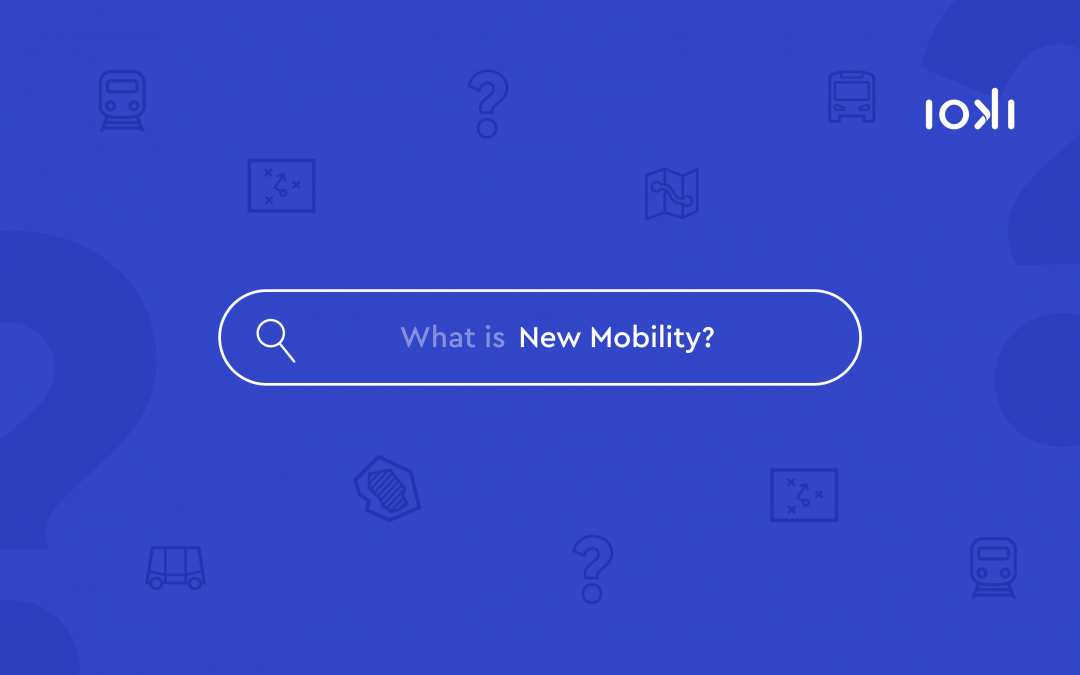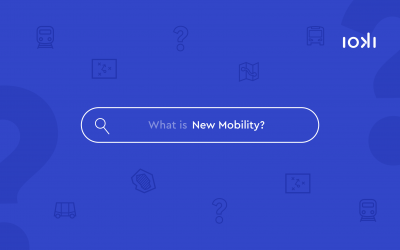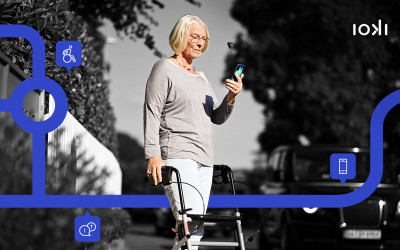Not an easy task for companies, and yet companies from small SMEs to DAX-listed corporations have found ways and means to make mobility easier for their employees. They have a multitude of directly implementable measures at their disposal, such as more efficient vehicles, on-demand services as company transport or sharing offers. Economic and ecological action go hand in hand.
From fleet management to mobile services
Telekom Mobility Solutions demonstrates how the leap from pure fleet operator to innovative mobility service provider can look like. The subsidiary of Deutsche Telekom sees sustainable and demand-oriented employee mobility as a decisive lever for implementing the company’s own climate protection goals: By 2023, Deutsche Telekom wants to reduce its carbon dioxide emissions by 90 percent compared to 2017. Dr. Olga Nevska, CEO of Telekom MobilitySolution sums it up in her interview with ioki insights « The responsibility of employers is to offer all employees access to flexible and affordable means of transport ». To this end, Telekom relies, among other things, on the company’s own on-demand transport, which flexibly gets employees from A to B. Not only that but the service was also flexibly adapted to the applicable Corona measures at the time and brought employees safely to work. The demand-responsive transportwith ioki’s routing and pooling software is now part of the daily mobility routine of many employees. The offer is so successful that commuter transport services on the first and last mile are also covered in this way.
An example from Switzerland shows that demand-responsive transport works – in public transport and as part of corporate mobility. Since the beginning of 2023, PostAuto AG has been using on-demand transport for the last mile between the railway station and several company locations, powered with software by ioki. With success, Fabian Heil reports: « The Engehalde Shuttle is far more than just a new, digitalised mobility service for our employees. On-demand is an important element of our strategic scheme « public transport of the future ». With this, the Head of Market Launch at PostAuto AG addresses an important point, because public transport and corporate mobility are facing similar challenges: Offering flexible and demand-oriented mobility.
At the beginning of every measure on the way to modern corporate mobility is therefore the analysis of mobility needs. This is also the view of the German think tank Agora Verkehrswende: « The first step towards more sustainability in corporate mobility is a data-based analysis of the initial situation, » says the latest publication on sustainable corporate mobility (here in German only). This is an experience that the mobility experts at ioki also make in their daily work: « From our transport planning perspective, corporate mobility and local transport have many things in common: both require planning according to the individual needs of the users. If you know how citizens or employees travel and what their mobility needs are, you can provide the right transport services, » comments Michael Wurm, Director Mobility Analytics and Consulting at ioki. He and his team regularly analyse and plan new mobility solutions for public transport or for corporate mobility offers such as car-sharing or demand-oriented company transport.
My job, my mobility, my decision
A recent example of how successful implementation with prior analysis can look, is SAP. The company introduced a mobility budget as an alternative to a company car. From 1 April 2023, around 20,000 SAP employees will be able to exchange their company car for a bus, train, bicycle or e-scooter. An advantage for the company, employees and the environment. But before reaching that point, SAP tested the new approach in several pilot projects. The result: 70 percent opted for public transport, only 30 percent for cars, including car-sharing vehicles.
With a mobility budget, employers can actively promote the use of sustainable means of transport such as e-scooters, buses, trains or other sharing services. This is the business model of the Deutsche Bahn subsidiary DB Connect with its digital mobility budget Bonvoyo. Whether as an alternative to a company car, as a job ticket or as a « mobility as a benefit », companies that opt for a mobility budget for their employees can determine the possible uses on an entirely individual basis.
Marcel Langhans, Head of Marketing, Sales and Operations Connected Systems at DB Connect: « Companies want to have an attractive position in the employee market and are looking for contemporary benefits that can be customised to employees’ needs. At the same time, sustainability awareness is growing in the corporate context. As a mobility benefit the Bonvoyo mobility budget contributes to all of these points: Especially employees who travel by different means of transport in their daily lives or who prefer not have their own car are happy about travel costs that are borne by the employer and simply accounted for. »
A number of examples in Germany show how decisive the mobility offer can be for companies: for example, the tech giant Tesla is expanding the connection of its Gigafactory in Grünheide in Brandenburg to the public transport network. Bus shuttles and a more frequent regional rail service are intended to bring employees to their workplace in an environmentally friendly way. According to rbb information, up to 40 per cent of the approximately 7,000 employees in Grünheide currently use public transport regularly to get to and from work. The goal is to further increase this share, according to the company. However, what it means when local public transport does not reach the company premises is shown by a recent case from the Allgäu region. The IT company Scaltel is building new parking lots at its Waltenhofen site for the increasing number of employees because local transport is not an attractive alternative. There was a similar case in Billbrook. The Hamburg district consists largely of an industrial estate with more than 1,000 resident businesses and over 20,000 employees. Since 2019, flexible minibuses have been supplementing the local public transport system. For commuters, the hvv hop services in Billbrook can therefore bridge the first and last mile to the existing public transport system and by doing so supplement the existing bus routes.
The above examples show that the way we get to work is changing just as much as the work itself. Digital solutions can make a decisive contribution to making mobility in the working environment more flexible and sustainable. All in the sense of a flexible work-mobility balance.



